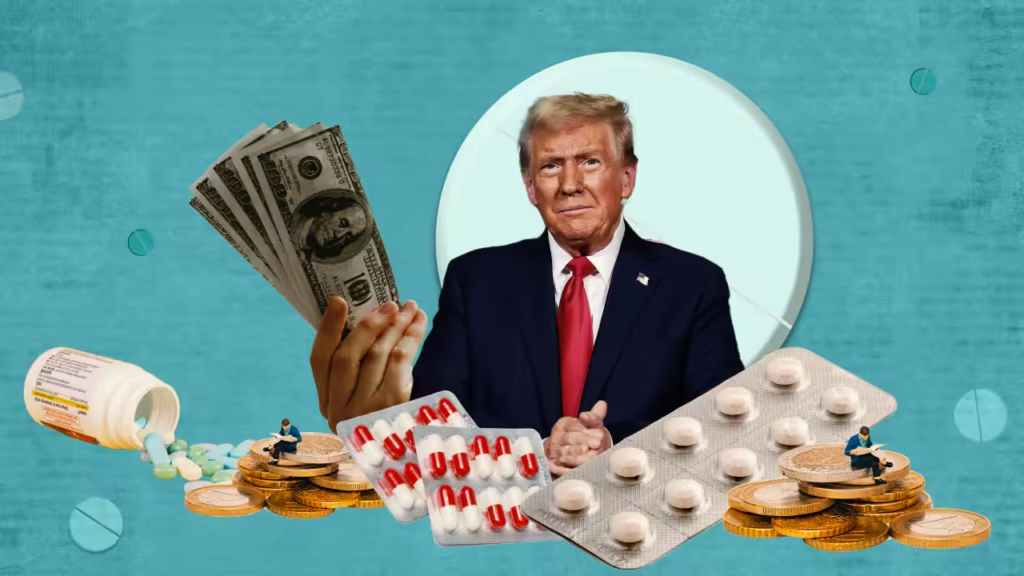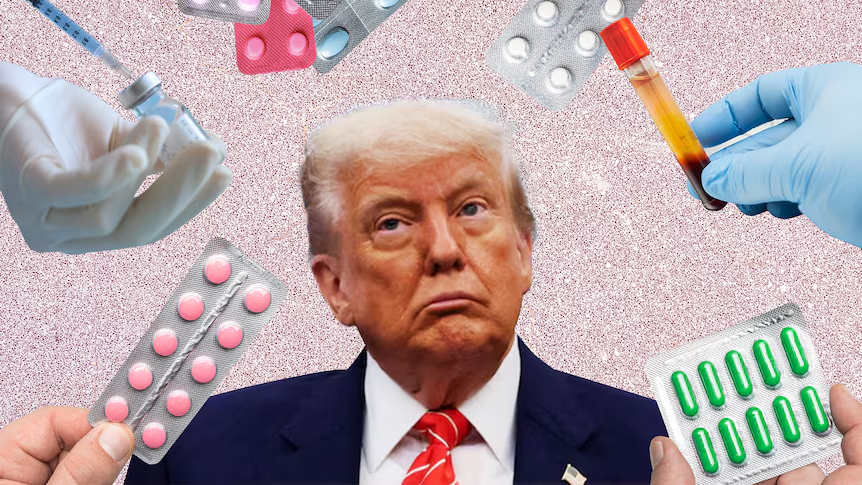Have you ever wondered why insulin in the U.S. costs 10 times more than in other countries?
What if the very system that’s supposed to help you stay healthy is actually making you pay a fortune? Well, buckle up, because there’s a massive shift happening in the American healthcare market, and you’re about to get the inside scoop. From Big Pharma’s hidden deals to the shocking role of PBMs, we’re pulling back the curtain on the pharmaceutical chaos that’s draining your wallet. It’s time to understand what’s really going on, and yes, we have the updates you need to know.

Table of Contents
Trump vs The Medical Cartel: The Insulin Price War (feat. PBM)

- The United States has the most expensive insulin in the world. (“off the chart”)
- In fact, insulin that costs $6.90 in Australia, $7.50 in the UK, $11 in Germany, $12 in Canada, and $14.40 in Japan, will set you back $98.10 in the U.S.
- The discovery of insulin and its effectiveness in treating diabetes is credited to Canadian scientist Grant Banting.
- Grant Banting cared more about diabetes patients being freed from their suffering than making a profit.
- Banting sold the insulin patent to the University of Toronto for just $1.
- Because there’s no patent fee, Canadians can buy a month’s worth of insulin for just $35 at any pharmacy.
- But, of course, the U.S. is a different story.
- The same month’s worth of insulin that costs $35 in Canada will cost over $2,000 in the U.S.
- There’s no real reason for insulin to be so expensive in the U.S. either.
- The main reason for the high cost is the complicated pharmaceutical distribution system in America.

PBM Power: The Hidden Hand Behind Your Prescriptions

- In the U.S., a private company called Pharmacy Benefit Management (PBM) negotiates drug prices and usage with pharmaceutical companies on behalf of insurers.
- PBMs decide which drugs will be used for certain conditions, negotiate their prices, and even review how they’re being used.
- PBM’s main power is in deciding which drugs make it onto the list of approved medications.
- PBMs give instructions to insurance companies about which medications should be used for specific conditions.
- Insurance companies, in turn, tell hospitals to prioritize prescribing certain drugs based on PBM’s guidelines.
- So, when hospitals prescribe medications, they’re really following PBM’s advice.
How PBMs, Insurance, and Pharma Companies All Make a Deal

- The final price of a drug in the U.S. is a combination of the pharmaceutical company’s price, the insurance company’s reimbursement, and the PBM’s fees.
- Let’s say you get a prescription for a $100 drug and use your insurance. The insurance company sends that $100 straight to the pharmaceutical company.
- The pharmaceutical company keeps $40 for the cost of the drug and gives $60 to the PBM.
- PBM then takes a $6 fee for itself and sends $54 as a rebate back to the insurance company.
- While the insurance company technically pays $100 to the pharmaceutical company, they get back $54 in rebates. So, they’ve only spent $46.
- This is why insurance companies like working with PBMs that give them big rebates.

The Prescription Price Game: Everybody Wins—Except You
- PBMs compete based on how much money they can extract from pharmaceutical companies and share with insurance companies.
- For drug companies to increase sales, they need to make sure their drugs are included in the PBM’s list—and at the top of the list.
- It’s just like on food delivery apps—restaurants that show up at the top get more customers, which leads to more sales.
- The more a drug shows up at the top of the prescription list, the more prescriptions it gets, and the more it gets sold.
- So, drug companies, PBMs, and insurance companies work together to make the most money.
- One way they do this is by raising the list price of the drugs.
- If a $100 drug’s price is raised to $200, PBMs can take a bigger fee.
- Insurance companies also get bigger rebates, so they don’t lose out either.
- The pharmaceutical company might pay higher fees to PBMs and insurance companies, but they make up for it by getting a higher price for the drug.
- Raising the price benefits everyone involved—PBMs, pharmaceutical companies, and insurance companies.
- The higher drug costs get passed on to you, the consumer, through higher insurance premiums.
- This is how U.S. drug prices have gone through the roof.

Insurance, PBMs, and the Impact on You
- People who pay high insurance premiums might not notice the price hikes because their out-of-pocket costs are the same with insurance.
- The real problem is for those without insurance or those with low-cost plans that don’t cover much.
Trump vs The Cartel: The Battle to Lower Drug Prices

- President Donald Trump was one of the few who tried to break the cozy relationship between PBMs, insurance companies, and pharmaceutical companies.
- In 2017, Trump promised to lower drug prices, and in 2019, he signed an executive order that banned PBM rebates.
- In 2020, he introduced a policy aimed at making U.S. drug prices the lowest in the world.
- But, Trump didn’t win re-election.
Biden’s Turn: Drug Price Reform Continues
- When Joe Biden took office, many of Trump’s drug pricing reforms were either canceled or postponed.
- However, Biden did try to lower drug prices, too.
- Through the Inflation Reduction Act, Biden sought to bring down drug costs.
- The Act included a provision that capped insulin prices at $35 a month, with the government covering the rest.
- This $35 price cap is the same as what Canadians pay for insulin without a prescription.
The Insulin Saga in Congress
- The Inflation Reduction Act passed the House and made it through the Senate with some changes to the insulin provisions.
- The $35 insulin cap applies only to those with Medicare coverage.
- Medicare is the U.S. government-run health insurance program for people 65 and older, covering 65 million beneficiaries.
- This means that people under 65 with diabetes will still have to pay the full price for their insulin.
Big Pharma’s Influence: A Tale of Lobbying Power
- In the end, the massive lobbying power of U.S. pharmaceutical companies is undeniable.
- As the election approached, Biden became more focused on tackling the issue of high drug prices.
To be continued in Part 2
The First Battle in the War on Big Pharma – You Won’t Believe What Happens Next (Part 2 Coming Soon)

This is just the beginning, folks. The first half of the war has been waged, and the fight for affordable healthcare is far from over. You’ve seen how Big Pharma, PBMs, and insurance companies are playing the system—but trust me, things are about to get even crazier. This isn’t just a fight for insulin—it’s a battle for every American’s right to affordable healthcare. Stay tuned for Part 2, where we reveal what’s REALLY happening behind the scenes. Believe me, you don’t want to miss this.
Discover more from Alphazen Dynamics
Subscribe to get the latest posts sent to your email.



